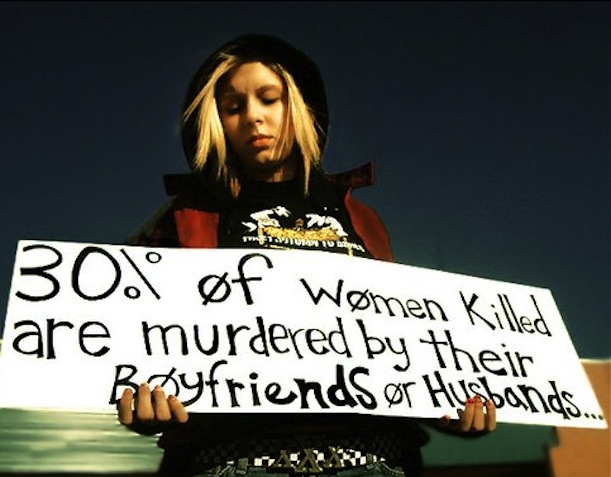
The fact is that the serial killer examples are only the ones that are sensational enough to make the news. These are the high-profile cases that some animal welfare organizations use to drive their point home, but the reality is that this pattern has shown itself over and over again in much less "news-worthy" cases. One might argue that they in fact, lessen the impact, because it makes this connection appear to be something that only exists in serial killers and "psychos", when in fact its very likely that everyone reading these words knows someone who has abused animals.
Surely you know at least one person who suffers from child-abuse, or is beaten by their spouse...
- In 88 percent of 53 families where various forms of child abuse had taken place, animal abuse had also occurred. In two-thirds of these families the animal abuser was the father figure; in one-third it was a child. The researchers suggested that, in such cases, pet abuse by children was often a manifestation of children's response to their own victimisation; a replication of the dynamics of their own abuse on powerless pet figures. 1
- Of 23 British families with a history of animal neglect, 83 percent had been identified by experts as having children at risk of abuse or neglect. 2
- In one study of battered women, 57 percent of those with pets said their partners had harmed or killed the animals. One in four said that she stayed with the batterer because she feared leaving the pet behind. 3
Because the household pet is often used as a control device to keep the abused from seeking help, some shelters have developed programs to assist in these situations. Programs like the Animal Safehouse Program allows victims to leave their animals in foster care while they seek medical attention, counseling and help. For a national listing of Animal Safehouse/Safe Haven organizations, visit the HSUS Safe Haven Directory.
While animal abuse is an important sign of child abuse, the parent isn't always the one harming the animal. Children who abuse animals may be repeating a lesson learned at home; like their parents, they are reacting to anger or frustration with violence. Their violence is directed at the only individual in the family more vulnerable than themselves: an animal. One expert says, "Children in violent homes are characterized by...frequently participating in pecking-order battering," in which they may maim or kill an animal. Indeed, domestic violence is the most common background for childhood cruelty to animals.4
What Can be Done?
Children who have abused animals should learn through teachers, social situations, and good parenting that abuse is wrong, and correct their behavior. This is a critical time, and if any one of those corrective elements is missing, that child is high risk for potentially becoming more abusive later on. As said by Anthropologist Margaret Mead, "One of the most dangerous things that can happen to a child is to kill or torture an animal and get away with it".
There are things that can be done. Be sure to stop by the Prevent section to read some of our suggestions on how you can get involved, and how small things you can do now will help to raise your children to be caring adults - and be sure to educate others about the abuse connection.
Citations
- 1 DeViney, E., Dickert, J. and Lockwood, R. (1983) The care of pets within child abusing families, International journal for the study of animal problems, 4, 321- 329
- 2 "Child Abuse and Cruelty to Animals," Washington Humane Society
- 3 Deborah Sharp, "Animal Abuse Will Often Cross Species Lines," USA Today, 28 Apr. 2000.
- 4 Cornell University College of Veterinary Medicine, Animal Health Newsletter, Nov. 1994.